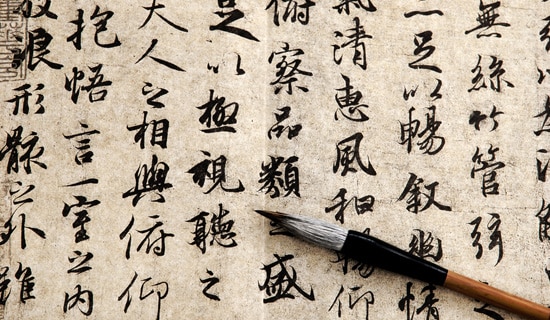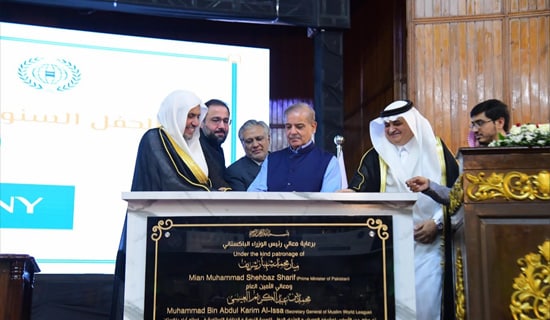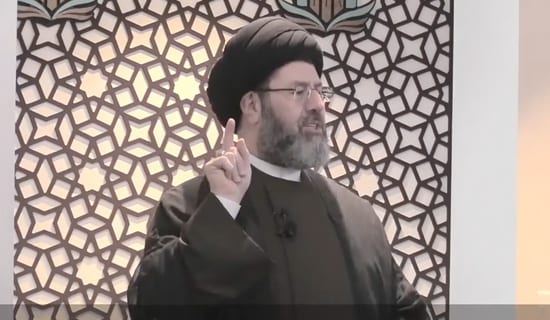Introduction
According to a Syrian opposition website, on the 'Ashura,[1] which this year occurred in early November, "the streets of Damascus, the 'Umayyad capital,' were filled with Shi'ite sights and self-flagellation rituals."[2] While this is not the first year that Shi'ite believers have observed the 'Ashura in Damascus, where the shrine of Ali's daughter Sayyida Zainab, a Shi'ite pilgrimage site, is located, the ceremonies were not, as in previous years, limited to the predominantly Shi'ite areas of the city, such as the Al-Amin neighborhood and adjacent to the shrine of Zainab. This year, the ceremonies took place on an unprecedented scale, with more participants and extending across greater areas of the city – even to Damascus's Umayyad Mosque, the symbol of the 661-750 CE rule of the Umayyad dynasty in Damascus, which was the bitter foe of the Shi'ites.
These wide-scale 'Ashura ceremonies in Damascus, four years into a bloody sectarian war, constitute a show of force by the Alawite[3] regime of Syrian President Bashar Al-Assad and its Shi'ite allies. They also signal to the regime's opponents both within and outside Syria that the regime is confident of victory. To these opponents, the widespread Shi'ite ceremonies represent another phase in the process of the Shi'ization of Syria, which is happening with the consent, and even under the direction, of the regime, and which has accelerated since the beginning of the civil war in March 2011.
This paper will discuss this year's 'Ashura ceremonies in Damascus, and reactions to them and to the regime's reported attempts to spread and strengthen the Shi'a in Syria.
Unprecedentedly Widespread Observance Of The 'Ashura In Damascus
An Iraqi news agency reporting on the extensive 'Ashura ceremonies in Damascus noted: "This year there was significant [pilgrim] movement [in the city], unlike in the last three years, when there was vulnerability in the security situation. As security conditions stabilized, and the situation was again like it had been previously, the area of the Sayyida Zainab [shrine] in Damascus Rif governorate again thronged with residents and pilgrims from inside and outside Syria."
Muhammad, a young man who volunteered to assist the pilgrims, attested: "This year is much better than the previous year in terms of preparations and success. Previously, it was difficult for the pilgrims and for the area's residents; the mortar shells fell near the shrine. [But] now we live in security."
Abu Ali, owner of a shop next to the Sayyida Zainab shrine, said: "These days, there are many pilgrims and visitors in the area of Al-Sayyida Zeinab. After the entire region was secured, pilgrims began arriving from neighboring countries such as Iraq and Lebanon. This stimulates the economy..." [4]

Left: Shi'ite processions on the streets of Damascus (photo: All4Syriainfo, November 1, 2014); right: Shi'ite pilgrims (photo: Facebook.comHalabTodayTV, October 30, 2014).
However, some, both inside and outside Syria, are less pleased at these Shi'ite sights. Syrian author 'Abdallah Maksur wrote on a Syrian opposition website that the fact that the regime permitted such widespread 'Ashura ceremonies in Damascus itself, the capital of the Umayyad dynasty, exposed the regime's sectarian face and showed that it intended to completely change the city's characteristics and transform it into a Shi'ite city. He said: "With the outbreak of the Syrian revolution, the regime began to reveal its filthy sectarian face... that was previously concealed, in the city's streets and institutions. Today, the Shi'ite (and 'Alawite) dialect can be heard in the streets of Damascus, because of a desire to transform the city's comely face and to pursue the racist policy that Damascus had in centuries past completely rejected.
"Across the city, there were self-flagellation processions, and calls that do not belong in [Damascus] were forced on it. I can understand if in Lebanon a sign saying in Farsi Khosh Omadi ['Welcome'] is raised in honor of Iran's former president Ahmadinejad [during his 2010 visit to Lebanon], but I cannot not imagine [such] a provocation against the residents of an entire city, aimed at uprooting them from their [heritage] and changing their identity. It is as if the regime is saying, 'Damascus is Safavid,[5] not Umayyad and its residents will be Shi'ite and 'Alawite, and you, its [current] residents, are strangers in it – so you must swiftly go into exile.'"
Warning the Sunni countries that are silent in the face of this Shi'ization, Maksur states: "The mentality in the Arab arena that consents to the change of the face of Damascus is, at the very least, incomprehensible. Do they not realize that changing the flag that flies in Syria means that everyone is falling into Tehran's hands[?]... Damascus is the capital of the Ummayads and of the culture of the world. This is our city, and we, its residents, speak in a dialect that is like its stones. Damascus is Umayyad, not Safavid..."[6]
Damascus resident Huda voiced apprehension that the cruelty reflected in the Shi'ite custom of self-flagellation to the point of bloodshed in 'Ashura ceremonies would be channeled against Syrians who dared to oppose the Shi'ites: "The streets of Damascus are filled with people who are not like us, and with the black vehicles of clerics and politicians for whom these people cleared the streets. Even the smells are alien. The scent of blood permeates the place – as if the blood of the dead and of the war was not enough. We have now among us those who invent religious ceremonies with unfamiliar sights... as if to intimidate you with them... There is no doubt that these bloody sights that fill the streets of the capital Damascus signal to its residents tremendous cruelty. Who can say a thing when he sees an Iranian [i.e. a Shi'ite] flagellating himself outside his house?"[7]

Marking the 'Ashura at the Umayyad Palace – an expression of Iran's takeover of the Syrian regime (source: Orient-news.net, November 4, 2014)
SUPPORT OUR WORK

Additional Manifestations Of Syria's Shi'ization
Regime opponents believe that the extent of the 'Ashura ceremonies in the capital is but another expression of the Shi'ization process that not only has the Assad regime's blessing but was promoted by it even before the civil war broke out in March 2011. The regime's aim in this is both to reinforce its position within Syria and to reward Iran for its support of it.
According to opponents of the regime, this Shi'ization is both demographic and cultural. Demographically, since March 2011, and increasingly since the conflict evolved from a civil and political rebellion to a sectarian Sunni-Shi'ite struggle, the regime has been expelling Sunnis and offering Shi'ites incentives to settle in strategic locations, in order to populate these areas with its supports and also as an incentive to recruit them to fight for it. An Orient-news.net report based on regional and Western intelligence sources stated that Iran, in collaboration with Syrian security apparatuses and Shi'ite clerics in Syria, was working to spread the Shi'a in the Deir Al-Zor region, using economic grants and provision of material needs.[8] The website also reported that "those who became Shi'ites" in the city of Al-Suwayda, which has a Druze majority, aimed to purchase land in the city center and to build there a Husseiniyah i.e. a Shi'ite religious center, and that the Iranian Embassy in Damascus had offered 1.8 billion Syrian pounds for this purpose.[9] Another opposition website reported that in the Al-Suwayda governorate, the regime was settling Iraqi and Lebanese Shi'ites and issuing them identity cards in Druze names.[10] It also claimed that the regime was passing laws allowing Iraqi and Lebanese supporters to be settled in homes vacated by Syrians fleeing the battles. According to this report, the law permits regime security apparatuses to appropriate the homes of citizens who had left and to rent them out to regime supporters.[11] It also stated that the regime was paying any Sunni who converted to the Shi'a at least $100 a month.[12]
With regard to the cultural and educational Shi'ization, it was reported that at the beginning of the 2014 school year, the first high school teaching the Ja'fari school of thought, which is one of the Shi'ite schools of thought, was opened in the Syrian coastal village of Ras Al-'Ayn. The Qatari daily Al-Quds Al-Arabi, which is opposed to the Assad regime, reported that when Bashar Al-Assad came to power, construction had begun on Husseiniyahs throughout Syria – "which proves that the Syrian regime is rewarding Iran for supporting it."[13]
The opposition website Zamanalwsal.net said that the official Syrian television broadcasts in March 2014 that marked Zainab's birthday proved the regime's intent to "spread Shi'ite culture and heritage amongst the Syrians." It noted that the official channel's coverage of the occasion used "a new [pro-Shia] discourse, that is even more [pro-Shi'a] than the Shi'ite media [itself]," and added that Syrian Grand Mufti Ahmad Hassoun, an Assad supporter, had attended the celebrations.[14] It also reported that the regime was sponsoring several Shi'ite associations and institutions, such as the Imam Al-Mahdi Boy Scouts Association that it said "brainwashed the children" and provided them with "athletic training closely resembling military training."[15]

A procession of the Imam Al-Mahdi Boy Scouts Association in Syria (photo: Zamanalwsal.net, March 9, 2014).

Syrian Grand Mufti Ahmad Hassoun at a Boy Scout ceremony (photo: Zamanalwsal.net, March 9, 2014).
* N. Mozes is a research fellow at MEMRI.
Endnotes:
[1] On the 'Ashura Shi'ites commemorate the murder of Imam Hussein, the grandson of the Prophet Muhammad, at the Battle of Karbala in 680 CE, by Umayyad caliph Yazid ibn Mu'awiyah.
[2] All4syria.info, November 1, 2014.
[3] Alawite Islam is a branch of the Twelver school of Shi'ite Islam.
[4] Burhatnews.com, October 28, 2014.
[5] The Safavid dynasty ruled Persia in 1501 to 1722.
[6] Orient-news.net, November 5, 2014.
[7] Al-Quds Al-Arabi (London), November 3, 2014.
[8] Orient-news.net, April 22, 2014.
[9] Orient-news.net, October 20, 2014.
[10] All4syria.info, October 22, 2014.
[11] All4syria.info, November 1, 2014.
[12] Al-Quds Al-Arabi (London), September 29, 2014.
[13] Al-Quds Al-Arabi (London), September 29, 2014.
[14] Zamanalwsl.net, March 8, 2014.
[15] Zamanalwsl.net, March 9, 2014.




